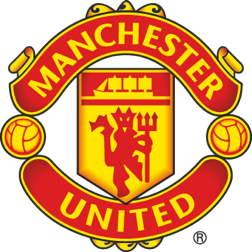Ten things you need to know about goalkeeper kits
Often the biggest character on the pitch, goalkeepers have been routinely forgotten when it comes to discussions about kits. So here are the 10 things we think you need to know about the shirts worn by our men between the sticks.
1. They didn’t always have their own style
Goalkeepers haven’t always been known for their outlandish style and garish neon shirts. In football’s early years the player in goal looked the same as his outfield team-mates. The only difference? A flat cap to keep the sun out of his eyes whilst he scanned the pitch for the ball.
2. When they did, there still were strict limitations
In June 1909 (and, some would argue, after a little too long), the FA realised that it was difficult for officials to spot a definite handball in a crowded goalmouth. Ruling bodies decided that keepers had to wear a different coloured kit to the outfield players, but imposed strict limitations: only red, white and blue could be worn. Four years later, green was added to the approved list and United made a favourite of the colour until the 1990s.
3. Really strict limitations
The FA also expected goalkeepers to wear long sleeves. Although this might have been linked to warmth, it was also to help avoid those difficult goalmouth melee decisions. Peter Schmeichel was our first keeper to show off his elbows when we faced Spurs on 10 August 1997 and Fabien Barthez would make short sleeves his first choice in the early 2000s.
4. Numbers came late
During the late 1920s clubs began to experiment with numbered jerseys and by the 1939/40 season, it was mandatory for players to wear numbers. These helped to denote the position of the player on the pitch. However, goalkeepers were exempt. Everyone knew that the man in the different coloured shirt was no.1, and it wasn’t until the mid-1970s that United’s keepers adopted numbers.
5. Logos came early
For outfield players, the Admiral logo was the first manufacturer’s badge to appear on shirts, but for our goalkeepers’ kits, Umbro take this honour, with a small logo embroidered in place from 1970.
6. Staying nice and cosy was crucial
In 1912, there was another change to regulations: goalkeepers could now only handle the ball in the penalty area (rather than anywhere in their own half). Increasingly tied to the goalmouth, there was a move towards keeping the custodian warm and woolly jumpers became a common sight on pitches. Absorbent knitwear remained the standard for keepers throughout the league for almost 50 years.
7. It helped them look imposing whilst being protected
Although during the ‘70s and ‘80s goalkeepers stuck to thin jersey and polyester materials, by the 1990s, warmth and additional padding returned, with quilted fabrics and a slight turtle neck helping gigantic men like Schmeichel to look even bigger. The quilting also offered extra protection when goalies threw themselves to the ground in pursuit of the ball.
Goalkeepers’ kits stayed pretty plain until the 1980s, when innovations in printing gave manufacturers the opportunity to try something new. Adidas took the designs they had created for international competitions, and began to use them on our kits. These still weren’t the weird and wonderful graphics we expect, but a tasteful stripe in a slightly darker green in 1985/86, and later a diamond pattern, familiar with anyone who had seen Soviet Union keeper Rinat Dasayev at 1986’s World Cup.
It was Euro ’92 where goalkeeper kits came into their own (we’re looking at you, Denmark!). An explosion of colour and patterns was seen across the inaugural Premier League season. Our new manufacturer, Umbro, used a template kit for most of their contracted clubs but created bespoke designs for Everton, Tottenham Hotspur and, of course, Manchester United. For the rest of the 1990s, our keepers were resplendent in eye-catching designs we still remember fondly.
10. It didn’t always match
Although keepers now had their own garish identity on the pitch, they still regularly wore the shorts and socks of the outfield players until 1994/95. This harked back to the original FA rule change, which only regulated goalkeepers’ top halves. Originally, this wasn’t an issue, but by the wild kits of the 1990s, some fairly hideous combinations were heading out of the tunnel. Thankfully this was stopped, although facing York City in the 1995 League Cup, Schmeichel’s combo left a lot to be desired, much like the result.




